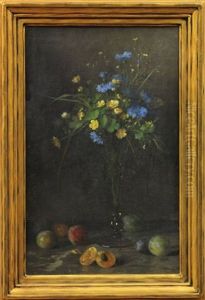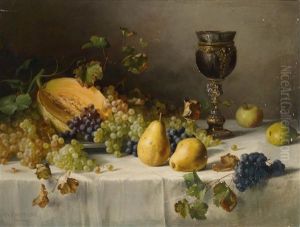Julius Victor Carstens Paintings
Julius Victor Carstens was a German painter, primarily recognized for his contributions to maritime art and his role in the 19th-century European art scene. Born in 1820 in Schleswig, then part of the Danish monarchy, Carstens's early life was marked by the region's rich seafaring tradition, which would greatly influence his later works. His fascination with the sea and ships became the cornerstone of his artistic pursuits, leading him to become one of the notable marine painters of his time.
Carstens embarked on his formal art education in Copenhagen, Denmark, where he studied under prominent artists and teachers of the era. His talent was evident early on, and he quickly distinguished himself as a skilled painter with a unique ability to capture the dynamic essence of the sea. His works often depicted vivid seascapes, naval battles, and serene harbor scenes, characterized by meticulous attention to detail and a profound sense of realism.
Throughout his career, Carstens traveled extensively across Europe, drawing inspiration from various maritime settings. His journeys took him to the coasts of France, the Netherlands, and the Mediterranean, enriching his palette and broadening his thematic range. This period was marked by a prolific output of paintings that were well-received by critics and the public alike. He exhibited his works in major art cities of the time, including Berlin, Paris, and London, gaining international recognition.
Carstens's art was not only appreciated for its aesthetic beauty but also for its historical accuracy and its ability to evoke the majesty and peril of the sea. His paintings are notable for their dynamic compositions, masterful use of light, and the emotional depth they conveyed. He became a significant figure in the marine art genre, influencing subsequent generations of artists.
Julius Victor Carstens passed away in 1878, leaving behind a legacy that endures in the collections of major museums and galleries across Europe. His contributions to maritime art have been commemorated in various retrospectives, and his works continue to be studied and admired for their artistic and historical significance.














